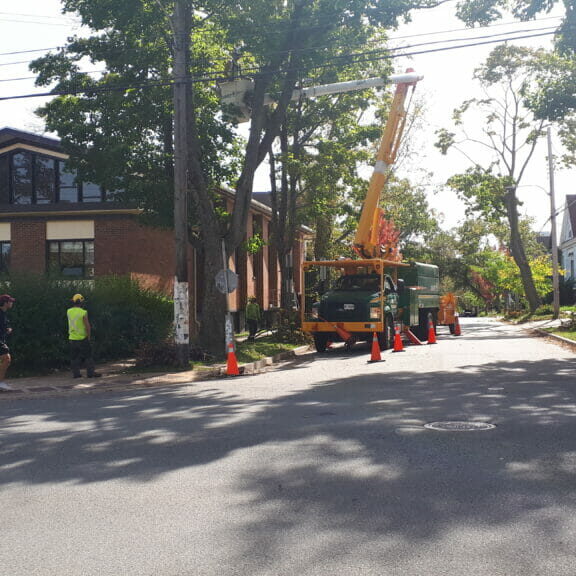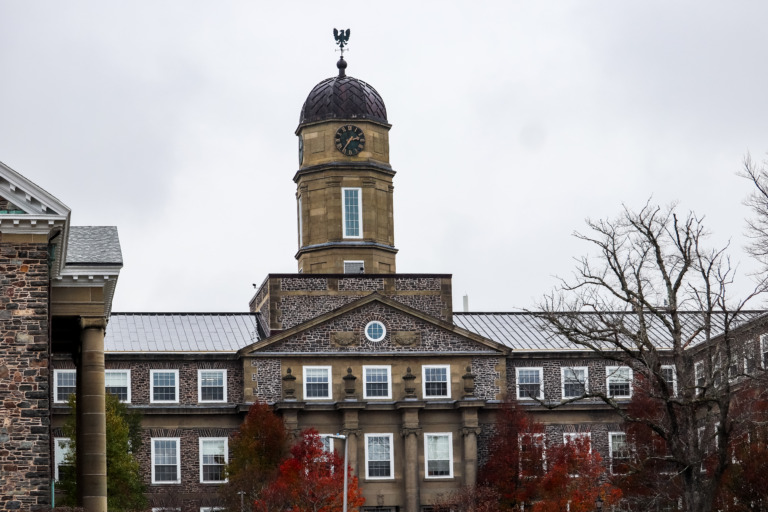
Last residence in the dark
Henry House the last residence without power following Hurricane Fiona
A week after Hurricane Fiona moved through Nova Scotia, there were still students living on the Dalhousie University campus without power.
In particular, students living in the Mini Res houses and Glengary Apartments were hit the worst by power outages. Neither residence building is outfitted with generators so students had to bear the brunt of the storm without power, unlike other residence buildings on campus. Other non-residence houses on campus also went without power for different lengths of time.
Theo Dawson, a first-year student, living in Henry House of Mini Res, spoke out about his experiences.
“This was the first weekend I was in Halifax by myself, and it was a terrifying and horrible, lonely experience,” he said, “I could feel my mental and physical health deteriorating with every day.”
With a laugh, he added, “I feel like I truly understand what sundowning is now.”

Student describes experience without power
Dawson described sitting in residence during the storm, chatting with his roommates in their common room before the power went out. When the power quit, their residence assistant allowed them to use facilities at Howe Hall to charge devices because it had a generator, while Henry House did not.
After about a week without power, Dawson packed up and returned home to Fredericton because he felt he couldn’t deal with the situation anymore.
“It’s just really frustrating because I was made to feel I had to leave residence,” he said.
Henry House was the last residence left without power. Kristen Lipscombe, the media relations and issues manager for Dal, confirmed this when The Dalhousie Gazette contacted the Dal Residence Office for comment.
“We have been in contact with Nova Scotia Power to alert them of this situation,” she said. “Crews are working hard to restore power across the entire community.”
She thanked students for their patience and emphasized the hard work of their staff to keep residences running during this time.
Dawson said the situation could’ve been handled better, however. He was most frustrated with the lack of communication on the part of Dal to tell them what was going on.
“There was no communication from Dal as to why our power was still out,” Dawson said, noting the other Mini Res houses, Lyall and Colpitt, had power restored in a reasonable amount of time.
“It took a better part of the week for the Dal Residence Office to acknowledge and deal with the power outage,” Dawson added. He said it only compounded the feeling that Mini Res is forgotten by Dal and it felt like students living there aren’t part of the greater community.
Mini Res and Glengary are situated in areas that were most impacted by the storm and sustained the most damage, according to the Dalhousie Student Affairs Office, causing delays in returning power to these buildings. Dal told Dawson the damage to Henry House’s power meter was the source of the delay in power restoration.
Dawson was told Dal had to get a private electrician to fix the problem but still felt that communication could’ve been better to inform students in Henry House about what was happening.
“I wish we had consistent daily updates. It feels hopeless waiting around,” he said.
Situation in the rest of the province
Students in Henry House aren’t the only ones still impacted by power outages. As of Oct. 1, more than 40,000 Nova Scotia Power customers in the province were still without power. Many of these people were located in Pictou County and Cape Breton, the areas in the province hit the worst by Fiona.
The damage from Hurricane Fiona was so severe throughout the province that N.S. Premier Tim Houston asked the federal government for 1,000 troops to take part in recovery efforts.
Additionally, those without power for more than 48 hours can apply for financial aid through the province. Those who apply will be granted $100 to cover the cost of food spoiled during the power outages, as well as additional funds on a case-by-case basis. Following Hurricane Juan in 2003, most power outages across the province lasted only four to five days. With Hurricane Fiona, 19 years later, power outages have lasted longer than a week in rural parts of the province and between four to six days in Halifax.






